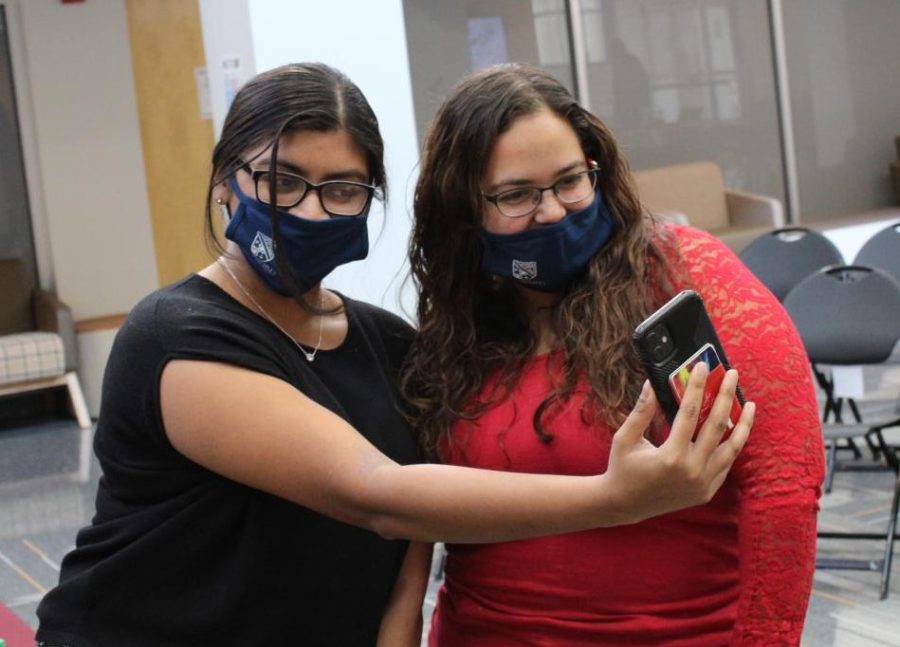This past May, Instagram created a feature that allowed users to hide their posts’ “like” count from the public. This feature was added — according to the platform — to “depressurize people’s experience” on the app and make posting “less competitive.”
Instagram saw how “likes” affected the mental health of its users and noticed that users could become stressed over the need to compete with the number of “likes” received by others. The toxic atmosphere created by this sense of competition increased insecurities, anxiety and fear of missing out among users.
The feature can be enabled or disabled at any time by the user, giving them more control over their profile and what others can view.
Today, teenagers and young adults live in a world heavily impacted by the presence of social media. According to the American Academy of Child and Adolescent Psychiatry, 90% of people ages 13-17 have used social media at least once in their life. Seventy-five percent of teens reported having at least one active social media profile, and 51% of teens visit at least one social media site daily.
While social media allows users to connect with friends, meet new people and explore interests, there is a dark side to it, as well.
A 2018 survey conducted by the Pew Research Center explored the relationship between teens’ social media experiences and their mental health. The survey found that 20% of teens who have at least one active social media profile have to check their feed once every three hours to avoid feeling anxious. Such compulsivity is classified by the Anxiety and Depression Association of America as social media anxiety disorder.
Another condition caused by social media is “Facebook depression,” in which teens who spend time on social media begin to exhibit classic symptoms of depression from “the intensity of the online world,” according to the American Academy of Pediatrics.
Over time, social media has facilitated competitiveness regarding how many “likes” one receives, leading to unnecessary stress and pressure as users battle to receive more “likes” than their competition. Social media platforms need to create a feature similar to Instagram’s update to help eliminate this toxic atmosphere, and some have already taken action.
While social media allows users to connect with friends, meet new people and explore interests, there is a dark side to it, as well.
On Nov. 10, YouTube announced on the “YouTube Creators” channel an update that made “dislike” counts on videos private, though the “dislike” button remained.
The platform launched this update to reduce “stress and embarrassment” felt by creators, helping them produce content without feeling the pressure and anxiety from the number of “dislikes” their videos may receive.
Facebook is following Instagram’s lead after realizing how social media impacts mental health; it too has given its users the ability to hide the “likes” they receive.
Instagram’s feature provided a big step in the social media world to create a more positive, stress-free environment, but more work needs to be done. All social media platforms should consider providing features like those offered by Instagram, Facebook and YouTube, so users have more control over their profiles and what the public can see on their accounts.
Social media should be a place where creators can express themselves without feeling pressured, stressed or anxious about how many “likes” and “dislikes” they receive. Without having the features to eliminate these feelings, social media will continue to foster a damaging atmosphere for its users.
This story was originally published on HCC Times on November 19, 2021.































![IN THE SPOTLIGHT: Junior Zalie Mann performs “I Love to Cry at Weddings,” an ensemble piece from the fall musical Sweet Charity, to prospective students during the Fine Arts Showcase on Wednesday, Nov. 8. The showcase is a compilation of performances and demonstrations from each fine arts strand offered at McCallum. This show is put on so that prospective students can see if they are interested in joining an academy or major.
Sweet Charity originally ran the weekends of Sept. 28 and Oct. 8, but made a comeback for the Fine Arts Showcase.
“[Being at the front in the spotlight] is my favorite part of the whole dance, so I was super happy to be on stage performing and smiling at the audience,” Mann said.
Mann performed in both the musical theatre performance and dance excerpt “Ethereal,” a contemporary piece choreographed by the new dance director Terrance Carson, in the showcase. With also being a dance ambassador, Mann got to talk about what MAC dance is, her experience and answer any questions the aspiring arts majors and their parents may have.
Caption by Maya Tackett.](https://bestofsno.com/wp-content/uploads/2024/02/53321803427_47cd17fe70_o-1-1200x800.jpg)
![SPREADING THE JOY: Sophomore Chim Becker poses with sophomores Cozbi Sims and Lou Davidson while manning a table at the Hispanic Heritage treat day during lunch of Sept 28. Becker is a part of the students of color alliance, who put together the activity to raise money for their club.
“It [the stand] was really fun because McCallum has a lot of latino kids,” Becker said. “And I think it was nice that I could share the stuff that I usually just have at home with people who have never tried it before.”
Becker recognizes the importance of celebrating Hispanic heritage at Mac.
“I think its important to celebrate,” Becker said. “Because our culture is awesome and super cool, and everybody should be able to learn about other cultures of the world.”
Caption by JoJo Barnard.](https://bestofsno.com/wp-content/uploads/2024/01/53221601352_4127a81c41_o-1200x675.jpg)






